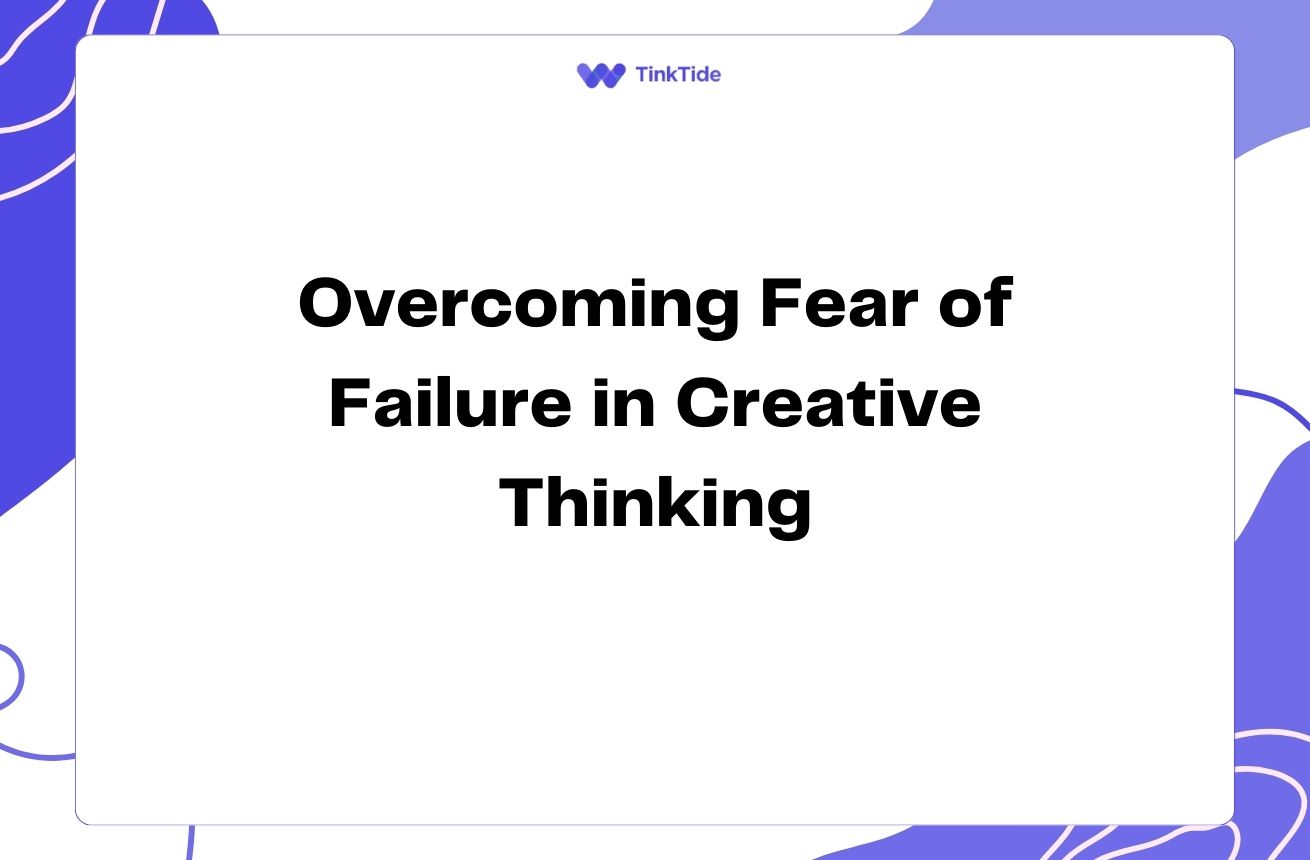Unlock Creativity: Top Ideation Techniques for Innovation
The Power of Ideation in Innovation
In today's fast-paced business world, creativity and innovation are crucial for success. Effective ideation techniques can help you generate fresh ideas, solve complex problems, and stay ahead of the competition. By mastering these techniques, you'll unlock your team's creative potential and drive meaningful innovation in your projects and ventures.
Ideation is the process of generating, developing, and communicating new ideas. It's a critical step in the innovation process, allowing you to explore possibilities and find unique solutions. Whether you're launching a new product, improving a service, or tackling a business challenge, ideation techniques can help you break through mental barriers and discover groundbreaking concepts.
In this article, we'll explore some of the most effective ideation techniques used by successful innovators and creative professionals. These methods will help you and your team think outside the box, challenge assumptions, and create innovative solutions that drive your business forward.
Brainstorming: The Classic Ideation Technique
Brainstorming is perhaps the most well-known ideation technique, and for good reason. This method, developed by Alex Osborn in the 1930s, encourages participants to generate a large quantity of ideas without judgment or criticism. The key principles of brainstorming include:
- Quantity over quality: Generate as many ideas as possible
- Withhold criticism: Don't judge ideas during the session
- Welcome unusual ideas: Encourage wild and unconventional thoughts
- Combine and improve ideas: Build on others' suggestions
To conduct an effective brainstorming session, gather a diverse group of participants, clearly define the problem or challenge, and set a time limit. Use a whiteboard or digital tool to record all ideas, and encourage everyone to contribute. Remember, the goal is to generate a wide range of possibilities, not to find the perfect solution immediately.
Mind Mapping: Visualizing Connections
Mind mapping is a powerful visual ideation technique that helps you organize thoughts and explore connections between ideas. Created by Tony Buzan, this method uses a central concept as a starting point and branches out to related ideas and subtopics.
To create a mind map, start with your main topic in the center of a blank page or digital canvas. Draw branches radiating from the center, each representing a related idea or subtopic. Continue branching out with more specific details or related concepts. Use colors, images, and symbols to make your mind map more engaging and memorable.
Mind mapping is particularly useful for exploring complex problems, organizing information, and identifying patterns or relationships between ideas. It can help you see the big picture while also diving into specific details, making it an excellent tool for both individual and group ideation sessions.
Try using digital mind mapping tools like MindMeister or XMind to create collaborative mind maps with your team, even when working remotely.
SCAMPER: A Systematic Approach to Ideation
SCAMPER is an acronym-based ideation technique that provides a structured approach to generating new ideas by modifying existing concepts. Developed by Bob Eberle, SCAMPER stands for:
- Substitute: Replace a part of your product, service, or process
- Combine: Merge ideas, products, or services
- Adapt: Adjust or tweak in some way
- Modify: Change an attribute (e.g., size, shape, color)
- Put to another use: Find a new purpose or application
- Eliminate: Remove elements or simplify
- Reverse/Rearrange: Change the order or sequence
To use SCAMPER, start with an existing product, service, or idea. Then, apply each of the SCAMPER prompts to generate new possibilities. This technique is particularly useful for improving existing offerings or finding new applications for established products or services.
Design Thinking: Empathy-Driven Innovation
Design thinking is a human-centered approach to innovation that draws from the designer's toolkit to integrate the needs of people, the possibilities of technology, and the requirements for business success. This method, popularized by IDEO and Stanford's d.school, emphasizes empathy, experimentation, and iteration.
The design thinking process typically includes five stages:
- Empathize: Understand the user's needs and experiences
- Define: Clearly articulate the problem or challenge
- Ideate: Generate a wide range of creative solutions
- Prototype: Create quick, low-fidelity versions of your ideas
- Test: Gather feedback and refine your solutions
Design thinking encourages you to step into your users' shoes, challenge assumptions, and reframe problems in human-centric ways. This approach can lead to innovative solutions that truly address user needs and create meaningful experiences.
Six Thinking Hats: Structured Collaborative Thinking
The Six Thinking Hats method, developed by Edward de Bono, is a powerful technique for exploring different perspectives and approaches to a problem. This method assigns six different 'thinking hats' to participants, each representing a different mode of thinking:
- White Hat: Focus on data, facts, and information
- Red Hat: Express emotions, feelings, and intuitions
- Black Hat: Identify potential risks and challenges
- Yellow Hat: Explore benefits and positive aspects
- Green Hat: Generate creative ideas and possibilities
- Blue Hat: Manage the thinking process and draw conclusions
By 'wearing' different hats, participants can separate different types of thinking and avoid the pitfalls of simultaneous mixed thinking. This method encourages a more comprehensive exploration of ideas and helps teams consider various aspects of a problem or solution.
Implementing Ideation Techniques in Your Process
To make the most of these ideation techniques, consider the following steps:
- Choose the right technique for your specific challenge or goal
- Create a supportive environment that encourages creativity and open communication
- Involve diverse perspectives and expertise in your ideation sessions
- Set clear objectives and time limits for each ideation activity
- Document all ideas generated, even those that seem impractical at first
- Follow up on ideation sessions with evaluation and action planning
Remember that ideation is just one part of the innovation process. To turn your ideas into reality, you'll need to evaluate, refine, and implement them. Use tools like prioritization matrices or feasibility assessments to select the most promising ideas for further development.
Address common questions
Here are some frequently asked questions about ideation techniques:
How often should we conduct ideation sessions?
The frequency of ideation sessions depends on your organization's needs and goals. Some companies hold weekly brainstorming sessions, while others organize quarterly innovation workshops. Regular ideation can help maintain a culture of creativity and innovation.
What's the ideal group size for ideation sessions?
The optimal group size varies depending on the technique and goal. For brainstorming, groups of 5-10 people often work well. Larger groups can be split into smaller teams for more focused ideation. Ensure that all participants have the opportunity to contribute.
How can we overcome creative blocks during ideation?
To overcome creative blocks, try changing the environment, using icebreaker activities, or introducing constraints (e.g., time limits or unusual prompts). Encourage participants to build on each other's ideas and use visual aids to stimulate thinking.
Should we include customers or end-users in our ideation process?
Including customers or end-users can provide valuable insights and lead to more user-centered solutions. Consider involving them in certain stages of the ideation process, such as gathering initial input or providing feedback on prototypes.
How do we balance wild ideas with practical solutions?
Encourage both wild ideas and practical solutions during ideation. Wild ideas can spark creativity and lead to innovative breakthroughs. Later in the process, you can evaluate and refine these ideas to develop more practical solutions.
Provide additional resources
IDEO U: Insights for Innovation
An online course on design thinking and innovation from IDEO
The Creativity Workshop
Workshops and resources for developing creative thinking skills
Mind Tools: Creativity Tools
A collection of creativity and problem-solving techniques
Stanford d.school: Design Thinking Bootleg
A toolkit for learning and practicing design thinking methods
Lateral Thinking by Edward de Bono
A book on creative thinking techniques by the creator of Six Thinking Hats
Unleash Your Creative Potential
Mastering effective ideation techniques is essential for driving innovation and solving complex problems in today's competitive business landscape. By incorporating methods like brainstorming, mind mapping, SCAMPER, design thinking, and Six Thinking Hats into your creative process, you'll be better equipped to generate groundbreaking ideas and solutions.
Remember that creativity is a skill that can be developed and improved over time. Regularly practicing these ideation techniques will help you and your team become more adept at generating innovative ideas and approaching challenges from fresh perspectives.
Start implementing these techniques in your next project or brainstorming session, and watch as your creative potential unfolds. With consistent practice and an open mind, you'll be well on your way to becoming an innovation powerhouse in your industry.
Supercharge Your Innovation Process
Ready to take your ideation skills to the next level? Try our innovation management platform for free!
Start Your Free Trial

